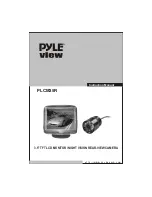
2. Raise the outer head restraint to its highest position, then route the
tether strap between the head restraint legs. Raise the head restraint to
its highest position, then route the tether strap outside/through the head
restraint legs. Make sure the strap is not twisted.
3. Secure the tether strap hook to the anchor.
SAFETY INFORMATION
26 |
4. Tighten the tether strap as instructed by the child seat manufacturer.
n
Protecting Larger Children
When a child is too big for a child seat, secure the child in a rear seat using
the lap/shoulder seat belt.
Have the child sit upright and all the way back, then ensure the following:
• The child’s knees bend comfortably
over the edge of the seat.
• The shoulder belt crosses between
the child’s neck and arm.
• The lap part of the seat belt is as low
as possible, touching the child’s
thighs.
• The child can stay seated for the
whole trip.
If a lap/shoulder belt cannot be used properly, position the child in a booster
seat in a rear seat. For the child’s safety, check that the child meets the
booster seat manufacturer’s recommendations.
When installing a booster seat, make sure to read the instructions that
came with it, and install the seat accordingly.
There are high- and low-type booster seats. Choose a booster seat that
allows the child to wear the seat belt correctly.
Some U.S. states and Canadian provinces/territories require children to use
a booster seat until they reach a given age or weight (e.g., 6 years or 60 lbs).
Be sure to check current laws in the state or province/territory where you
intend to drive.
Allowing a child age 12 or under to sit in the front can result in injury or
death if the passenger’s front airbag inflates.
If a larger child must ride in front, move the vehicle seat as far to the rear
as possible, have the child sit up properly and wear the seat belt properly,
using a booster seat if needed.
SAFETY INFORMATION
| 27
















































